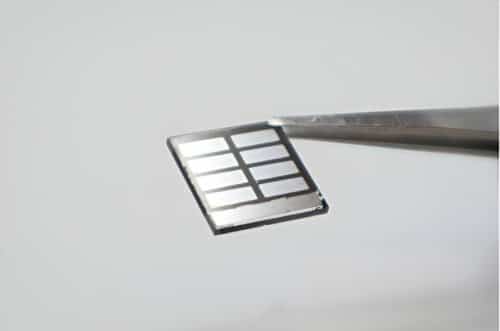Integrating perovskites with silicon-based semiconductors offers more efficient, cost-effective solar cells with enhanced stability and longevity.

Perovskites, when merged with the silicon-based semiconductors commonly used in contemporary solar panels, have the potential to form “tandem” solar cells. These cells could exceed the maximum theoretical efficiency of traditional silicon solar cells.
Research from the University of Michigan has uncovered methods to prevent rapid degradation of perovskite semiconductors, potentially paving the way for solar cells that could be two to four times less expensive than current thin-film solar panels.
Producing perovskites at lower temperatures offers economic and environmental benefits. Yet, their susceptibility to degradation from heat, moisture, and air shortens their lifespan, making them currently non-competitive for commercial solar panel use. The research suggests that using bulky “defect-pacifying” molecules significantly improves the stability and lifespan of perovskites, potentially making them more viable for solar energy applications.
Engineers have discovered that incorporating defect-pacifying molecules into perovskites can secure these under coordinated lead sites, thereby preventing further imperfections at high temperatures. However, the specific impact of each molecule type on the durability of perovskite cells has not been fully understood until now.
The team experimented with three additives, each varying in shape and size, and mixed them into perovskite crystal films that absorb light and generate electricity. These additives, similar in chemical composition, differed primarily in size, weight, and arrangement. The research focused on how these additives interacted with the perovskite and influenced film defect formation. They found that larger molecules, due to more binding sites, were more effective at adhering to the perovskite and preventing defects. However, it was also observed that the most effective additives were significant in mass and bulky, as slimmer molecules led to smaller perovskite grains and more grain boundaries, increasing the likelihood of defects.
Heating the perovskite films above 200 degrees Celsius showed that bulky additives enabled them to maintain their slate-black colour and develop fewer structural defects.
Reference: Hongki Kim et al, Molecular design of defect passivators for thermally stable metal-halide perovskite films, Matter (2024). DOI: 10.1016/j.matt.2023.12.003






